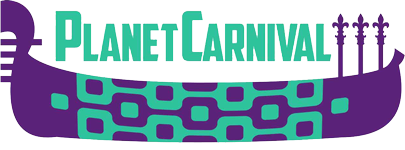
A LIQUORED-UP AND LASCIVIOUS LEXICON
Featured Entry:
TRIO ELÉTRICO – Motorized stages on wheels, with sound systems and lights. A fixture of Carnaval parades in Salvador da Bahia
Brazil’s rich musical heritage was front and center in 2013, when the guitarra baiana, or Bahian guitar, served as the theme for Salvador’s Carnaval season. Having only five strings and a shortened fretboard, the instrument may at first seem to resemble a toy. Yet in the hands of skilled player, it unleashes a wail worthy of Jimi Hendrix at his pyrotechnic best. The present form was produced by Armendinho Macedo in the 1970s, but its roots are much older.
The Bahian Guitar is descended from the pau elétrico, or “electric log” which was created in the early 40s by Macedo’s father Osmar and Adolfo “Dodo” Nascimento. While amplified guitars had been used by jazz bands for some time, the pau – which was tuned like a mandolin – was completely solid-bodied, and a true Bahian original. Although a patent was never filed, most musicologists agree that it was developed independently of the instruments created around the same time by Les Paul and Leo Fender in the USA.
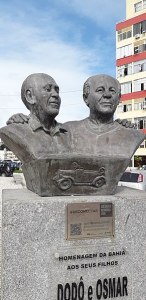
The electric log and its inventors have been immortalized in Salvador’s Carnaval, which revolves around three main circuitos or routes. The Dodo Circuit unfolds by the beaches of Barra and Ondina, while the Circuit of Osmar rolls through the downtown business district to the lush urban park known as Campo Grande. A third circuit runs close to the city’s historic center. Narrow colonial streets mean the scale is reduced, and the relative intimacy of the Batatinha circuit makes it popular with adults of a certain age, as well as families with small children. This reputation, of course, makes it anathema for the young and pretty people shaking it around Osmar and Dodo. Yet in the final analysis, this is the very meaning of culture, and of Carnaval – the transmission of aesthetic values from one generation to the next.
Batatinha can be translated as “small potatoes”, yet the level of joy is massive all over Salvador during the six days when Carnaval is formally celebrated. Stages are set up around the city, where revelers can take in ensembles of traditional and pop music, dance troupes, and exhibitions of capoeira, the graceful form of martial arts originated by enslaved Africans in Brazil’s northeast. One encounters impromptu processions dancing, drumming and careening at any hour of the day or night.
Bahia’s carnaval offers enjoyments for all tastes and inclinations, but there is no denying that for sheer spectacle, nothing surpasses the Trio Elétrico. In current usage, the term refers, not to a particular configuration, but to the motorized vehicles used to transport musicians as they perform. In the earliest years, this may have included guitar backed up by a rhythm section, with or without vocals. Over the decades, trios grew in both size and sophistication. Today, they are massive stages on wheels, tricked out with lights and sound systems that match anything seen in an arena or theatre. Tractor cabs, which elsewhere might haul transcontinental cargo, ferry the biggest Brazilian and international stars, to the gyrating delight of the masses.
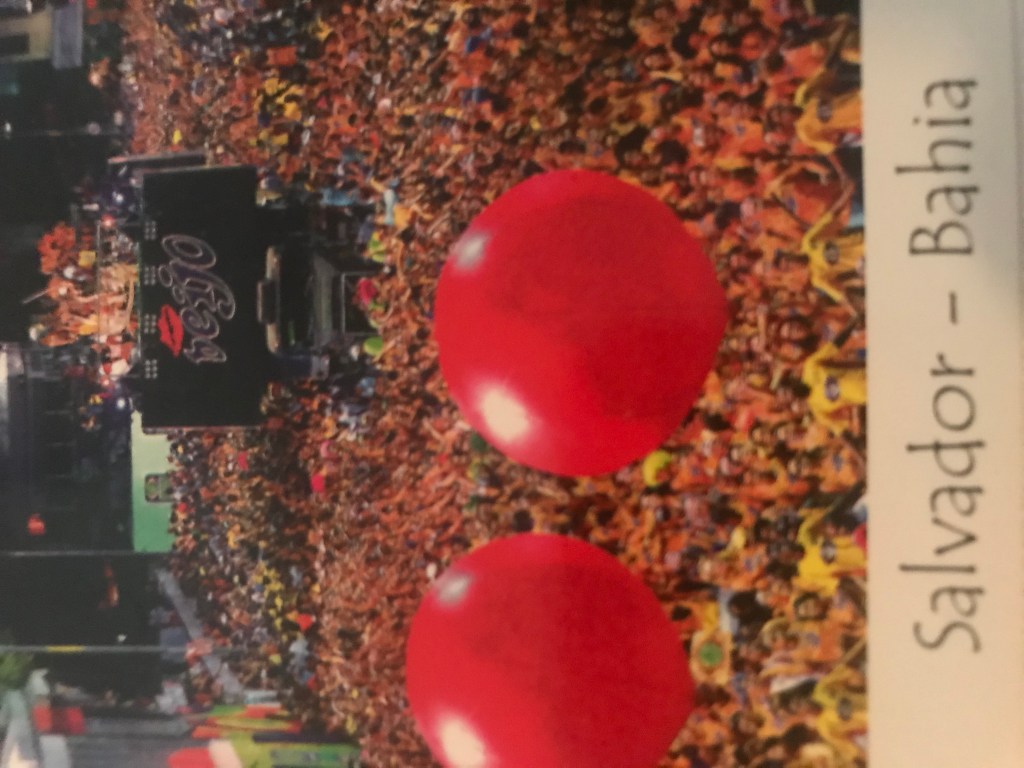
During Carnaval businesses along the parade route typically board up their windows, effectively making entire blocks into resonating chambers. To rest against the plywood as a trio passes, bass thumping at 100 decibels or more, is to truly understand the notion of feeling the beat.
In fact, “parade route” hardly conveys the spirit of Salvador’s circuitos. While the Portuguese percurso do desfile is a literal translation of the English idiom, the connotations are completely different. In more northerly latitudes, the word parade suggests a more-or-less continuous amalgam of high-school bands, floats, and local politicians waving from convertible limousines. The general public is invited to look on from behind barricades. In Bahia, the situation is far more fluid. During the inevitable delays between attractions, spectators freely cross the road to purchase refreshments, visit friends or sanitary facilities, or simply view things from another angle. There may be a break in the music, but there’s no break in the exuberance. In many ways, simply being at the parade is more important than watching it.
Complete Glossary:
| AFOXÉ — A Carnaval grouping inspired by the Candomble religion |
| ASH WEDNESDAY — In the Roman Catholic liturgical calendar, the day that marks the beginning of Lent. Believers go to church and have their heads daubed with ashes; traditionally, the end of Carnival. |
| AXÉ — The Yoruba word axé can be translated as “energy” or “life force”. In Bahia, the term has come to refer to various styles of popular music |
BACCHANAL — Commonly, any gathering centered around generous consumption of alcohol. Derived from Bacchus, the Roman god of wine, the phrase is frequently associated with Carnival, especially in the English-speaking Caribbean.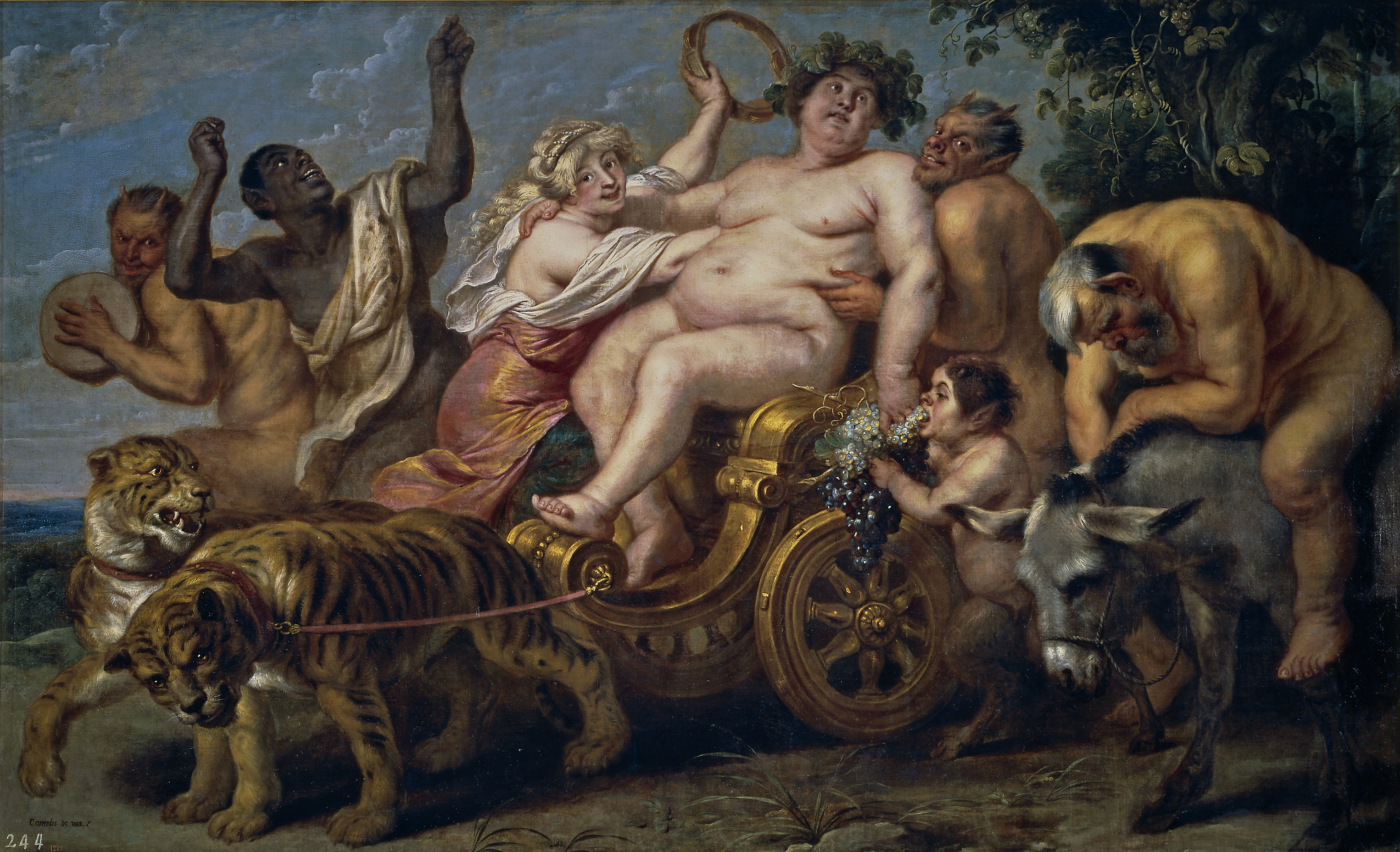 |
| BAKHTIN, MIKHAIL — Soviet philosopher and literary theorist (1895-1975). In Rabelais and His World, Bakhtin examined the carnivalesque culture of late medieval France through the lens of class struggle. |
| BATERIA — The percussion section of a samba school. In the largest parades, the bateria may consist of up to 300 individuals |
| BAUTA — A plain white mask, traditionally held in place by a three-cornered hat. The iconic image of Venice’s Carnivale and masquerades in general. |
| BLOCO – A grouping of revelers in a Carnaval procession, generally smaller and less formal than an Escola de Samba |
| BONECOS GIGANTES — “Gigantic dolls”, often depicting famous footballers or politicians, which may be as large as 6 meters. Crafted from fiberglass, wood or aluminum, they are carried through the Brazilian city of Olinda during Carnival celebrations. |
| BUTTENREDE — A form of humorous, rhyming speech, heard during Carnival in Cologne. “Butte” means a beer barrel, used as a lectern by the orators |
CALINDA — Stick-fighting competition, a feature of Carnival in rural Trinidad during the colonial era.  |
| CALYPSO — A genre of popular song originating in Trinidad, frequently centered on sexual themes or political satire. Top calypsonians distinguish themselves through clever wordplay and double entendre. |
| CHANTOUELLES– Creole singers who led call-and-response songs at Calinda bouts, extolling the prowess of their champions and mocking the opposition. Anglicized as “chantwells”, they are seen as forbears of calypsonians. |
| CHIENLITS — Literally “shit-a-beds”, derisive name for working class revelers in pre-revolutionary France.
|
| CIRCUITO — Any one of the routes used for official Carnaval street parades. In Salvador da Bahia, the main circuitos are Dodo, Osmar, and Batatinha. |
| COMMEDIA DELL’ ARTE — Genre of comedy originating in medieval Italy. The plays were performed by troupes of traveling actors, and the stock characters have inspired Carnival costumes and masks |
| COURIR — A type of Carnival procession involving horses or pickup trucks in parts of rural Louisiana. |
| CROP OVER — A Carnivalesque celebration in Barbados, originally marking the end of the annual sugar cane harvest |
| CULECO — Large tanker trucks filled with water and fitted out with hoses. Used to spray crowds of carnival celebrants in Panama. |
| DIABLOS SUCIOS — “Dirty devils”, folkloric characters in Panama’s Azuero peninsula, seen throughout the country during Los Carnevales. |
| DIMANCHE GRAS – Literally, “Fat Sunday”, when prizes are awarded for the best costumes and the Calypso Monarch title is bestowed. |
| ENREDO — The unifying theme of samba school’s procession, reflected in the music and design |
ENTIERRO DE LA SARDINA — “Burial of The Sardine”, mock funeral rite marking the end of Carnival in parts of Spain.  |
| ESCOLA DE SAMBA — “Samba School”, a social and artistic organization famed for staging elaborate parades in Rio de Janeiro and other cities |
| FASCHING — Also Fastnacht, name for pre-lenten celebrations in Bavaria and other parts of southern Germany; in the Rhineland, the more Latinate phrase Karneval is used |
| FÉCOS — Local name for the annual festival held during Carnival season in the Occitanie region of southwest France. |
| FIESTA DE LOS INDIANOS — Carnival Monday celebration on the Canary island of La Palma, famed for a ritual fight with talcum powder. The “Indians” in question are locals who migrated to the Spanish Caribbean, a/k/a the Indies. |
| FREVO — Form of music originated by brass bands in the state of Pernambuco. Syncopated and sinuous, it is now popular throughout Brazil. |
| GNOCCHI — Small dumplings of potato and flour, served like pasta. The traditional Carnevale dish of Verona. |
GUMBO — A type of stew including combinations of meats, seafood, vegetables and rice. Preparation of gumbo is a centerpiece of Mardi Gras festivities in Cajun country  |
HARLEQUIN — French name for Arlecchino, a popular character from the Commedia del’ Arte tradition. |
| INVERSION — To invert anything is to turn it upside down. Inversion of the usual social norms has been a hallmark of Carnival throughout history and around the world. |
| JAB MOLASSIE — A horned and vaguely menacing presence during Carnival in Trinidad & Tobago. Though the name is derived from the French for “molasses devil”, they typically take to the streets covered in grease or paint — and very little else. |
| JOE CAIN DAY– The final Sunday before Lent, occasion for a rough-hewn “People’s Parade” in Mobile.
|
| JOUVERT — “Day Break” an informal parade that marks the official start of Carnival, although in reality festivities start weeks earlier. |
| JUMBIES — Collective name for a variety of malevolent spirits, part of the folk religion of Trinidad & Tobago. Jumbies have often served to inspire Carnival songs and costumes. |
JUNKANOO — A festival celebrated in the Bahamas, with parallels to Mardi Gras and the ancient Roman Saturnalia 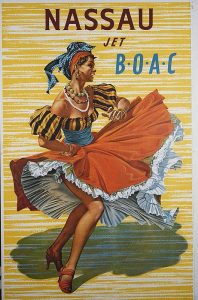 |
| KAISO — Term for early, traditional style of calypso music. The word is said to be derived from the Hausa language of West Africa. |
| KING CAKE — Pastry into which a coin or some other token has been baked. In France it was traditionally shared on the feast of Epiphany. In Louisiana, it is Mardi Gras fare. |
| KREWE — Social organization dedicated to parades and balls during Mardi Gras season. |
| LECHONES — “Suckling pigs”, rival bands of costumed revelers in the Dominican city of Santiago de Los Caballeros |
| LENT — In most Christian denominations, a period leading up to Easter. The faithful are urged to abstain from indulgences and vices. Carnival ends when Lent begins. |
| MARACATU — Carnaval ritual of northeastern Brazil. Various “nations” pay homage to their kings and queens. Processions are marked by call-and-response vocals and stately rhythms pounded out on drums, shakers, and bells. |
| MARDI GRAS – “Fat Tuesday”, the last day of Carnival. Often used to indicate the season as a whole. |
| MAS — Short for masquerade. To “play mas” means to don a costume and take part in a parade. |
| MASCHIERI — The mask-makers’ guild, organized in 15th century Venice |
| MASLENITSA — Week-long celebration leading up to “Great Lent” in Russia and some neighboring lands |
| MATA-ROCS — “Donkey Killers” nickname for residents of the town of Solsona in Catalonia. Legend attributes the name to the accidental lynching of a quadruped; the incident is commemorated during carnival with the hoisting of a papier-mache effigy. |
| MYSTIC ORDER — Mobile, Alabama’s equivalent of a Mardi Gras Krewe. |
| PANCAKE TUESDAY — The last day before Lent in the Great Britain. One of the few Carnival traditions to survive the Reformation. |
| PANORAMA — An organized series of competitions between steel ensembles, culminating on the final Saturday before Lent. |
| PIPOCA — Portuguese word for “popcorn” used to differentiate parade spectators from those in a bloco or watching from a paid viewing location. In other words, the majority. |
| ROAD MARCH — The song that serves as the “anthem’ of a given Carnival, determined by how often it is played on mobile sound systems as they pass designated points. |
| ROBA LA GALLINA — Dominican men dressed as voluptuous, parasol toting matrons. Translated as “Steal-the-hen”, the conceit is that an ample bosom and prodigious rump are ideal for concealing purloined poultry. |
| SATURNALIA — An ancient Roman festival dedicated to the god Saturn and held around the time of winter solstice; some see Saturnalia as a precursor of modern carnival. |
| SAVANNAH — Formally, Queen’s Park Savannah. A large public space in Port of Spain, the epicenter of many Carnival activities. |
| SHROVETIDE — The final three days before Lent, when the faithful traditionally receive the sacrament of Penance. Concurrent with, yet separate from, the indulgences of Carnival. |
| SOCA — Fast, syncopated style of dance music considered to be an offshoot of calypso. |
| STEEL PAN — A type of percussion instrument fashioned from an oil drum. “Pan” is used to refer to the instrument itself and the entire genre of music performed by steel orchestras. |
| THROW — Any one of various objects distributed as souvenirs by members of a krewe during Mardi Gras parades. |
| TRIO ELETRICO – Motorized stages on wheels, with sound systems and lights. A fixture of Carnaval parades in Salvador da Bahia. |
| VEJIGA – The inflated bladder of a hog or bull, dangling from a strap and carried by costumed Diablos during Carnival processions in the Dominican Republic. Revelers who get too close risk a sharp blow across the buttocks. |
| VOIL JEANETTEN — Men in dresses and women wearing beards during Carnival in Aalst, Belgium. Genders are bent and egos bruised as these “Dirty Janes” engage in the good-natured abuse of onlookers. |
| WIEBERFASTNACHT– Women’s Carnival in Cologne, held on the last Thursday before Lent. Local Damen are free to kiss all the Herren they desire. |
| ZOUK – Fast paced “jump-up” style of music, originating in the French Antilles. A feature of Carnival on Martinique and Guadeloupe. |



